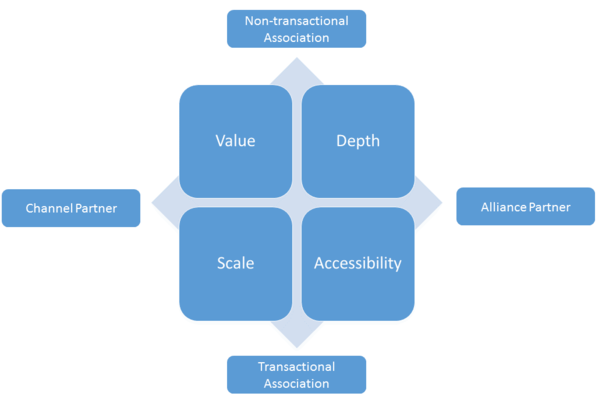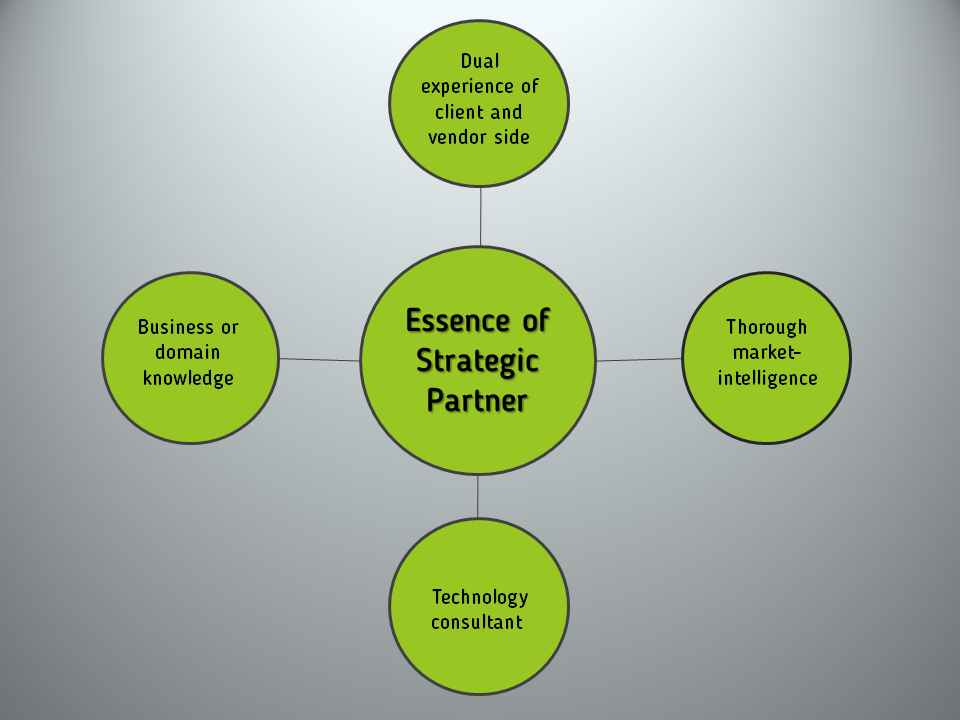
We have been discussing about partners – channels and alliances in my previous blogs posts. However, the question is who does what or rather how the roles of partners are differentiated. Though companies in late 2000 realized that to reach the business goals, direct sales strategy might not yield benefits to a greater extent, thus the need to establish the partners will come into picture. The company – partner approach will only be able to compete if it is part of an ecosystem or creates an ecosystem. Business success or client win entirely depends on how the various entities within a partner ecosystem are able to collaborate.
The benefits of doing business through partners primarily addresses major business directions for any company:
- Increase in market power and penetration.
- Market expansion and accessing new markets or new territory.
- Innovation, skill enhancement or new technology adoption
- Gaining scale and improving supply chain market defense and protection
Partner activities can be articulated through various terminologies like channels, ecosystems, alliances. All the above terms appear different to people and companies, thus it’s extremely hard to differentiate the partner marketplace. We will look at these terms the way the global market understands:
Partner eco-system:
Alliance Partners:- Association is measured through business benefits
- Less transactional approach
- Long term approach
- Interactive approach
- Innovative solution offerings
- Helping companies to build new practices and niche competencies
- Opening new market within a specific country
- Introduction of more qualitative opportunity
- Introduction of more quantitative opportunity
- Transactional relationships
- Focus is on improving supply chain or internal logistics for smooth project execution
- Creation of economies of scale
- Benefits are measured through volumes of business and discounts offered
It is expected to connect the IT operation with the partner’s type. Alliance partners are interested in more of interaction oriented activities, whereas channel partners are concerned about transaction oriented activities. The most common roles of partners - channel and alliance in the enterprise IT ecosystem has been summarized below:
Alliance partners:
- Business Consultants: Business consultants mainly emphasizes on business issues within an organization, which are usually operational in nature. Their focus embraces improving results through technology recommendations being a part of overall business strategy. The consultants are usually at the advisory role at client site.
- System Integrators (SI): System integrators receive a substantial part of their revenue from IT consultancy and system integration. Unlike business consultant, SI’s most prominent characteristic is that they are able to connect and integrate various subsystems in an IT environment. The SI mostly will have a generic approach to the entire IT systems.
- ISVs – The major revenue stream of an ISV comes from continuous software licenses sales, may be direct, indirect or via cloud. Increasingly, the business model also includes rise in the level of service and maintenance revenues. An ISV takes ownership of the product, however, they do not always have direct customer ownership.
Channel Partners:
- Value Added Reseller (VAR): VARs are the individuals who are successful in one or more specific IT roles, either horizontal (e.g. product engineering, cloud application development or mobile solution specialist) or vertical (public sector, healthcare, etc.). They build solution for specific vendors consisting of hardware, software and service components. VARs usually deal in hardware and software, but most of the revenue stream comes from service and integration and complete solution offering. The VARs often have direct access to and knowledge of the client base.
- Resellers: A reseller mainly supplies IT services without any modifications to a specific end-user market (account reseller, corporate reseller, consumer reseller). Margin is in volume.
- Distributors: A distributor sells to other channels rather than end-user. Their value add lies in volume, but they also provide other services like custom development, support and maintenance and training.
The channel and alliance partners stated are the conventional ones, however, they are responsible for the activities implemented by the partner community. The type of partner required by the companies depends on the direction which the company has agreed and decided to pursue. Typically, it will be a combination of both partners.



